Northern Matter in Poul Anderson’s “Middle Ages” of The Broken Sword and in J.R.R. Tolkien’s Middle-Earth
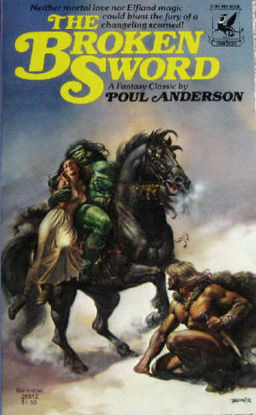
Poul Anderson’s The Broken Sword originally was published in a different form in 1954, which is why I’m discussing it at this time and not later. It is important to note that in Anderson’s introduction to the 1971 edition, he refers to his earlier self, the writer of the 1954 version, as if that person were not himself but in fact a different writer with the very same name. Anderson’s 1971 introduction also specifically takes into account J.R.R. Tolkien and his works. Anderson asserts that, like Tolkien, he has mined the rich veins of the Northern fantasy tradition, but he claims that, unlike Tolkien, he has found riches of a slightly different hue, perhaps gems with deeper or gloomier lusters. He writes:
In our day J.R.R. Tolkien has restored the elves to something of what they formerly were, in his enchanting Ring cycle. However, he chose to make them not just beautiful and learned; they are wise, grave, honorable, kindly, embodiments of good will toward all things alive. In short, his elves belong more to the country of Gloriana than to that house in heathen Gotaland. Needless to say, there is nothing wrong with this. In fact, it was necessary to Professor Tolkien’s purpose.
I was at first horribly confused by this reference to Gloriana, able to uncover at first only a post-dated work by Michael Moorcock of that title. Until I realized that Moorcock’s novel borrows from the very thing that must be Anderson’s reference – Gloriana, or the Queen of Faerie in Spenser’s The Faerie Queen (a work of whose ending I have not yet got to) who is herself an allegory of Queen Elizabeth.
What a very puzzling suggestion. Of course we know, from Tolkien’s own introduction to The Lord of the Rings, that Tolkien detests allegory, so this certainly isn’t the point of comparison that Anderson finds. So it must be Gloriana’s character, and in Spenser’s medieval reconstructionist tradition Gloriana must of necessity stand as the ideal form of every human virtue. But does this truly characterize Tolkien’s Elves? One may even become incensed when Anderson appears to make a slightly disingenuous comparison by claiming that he harks “further back” than Tolkien, to medieval Europe in which “cruelty, rapacity, and licentiousness ran free.” Um. Tolkien’s Elves lived in a vanished Earth Age, not in Spenser’s proto-Romanticist reimagined “Arthurian” England. If we’re talking in terms of scope, Tolkien’s setting might have more to do with Robert E. Howard’s Hyborian Age than even Anderson’s Middle Ages.
But perhaps we should ignore this in favor of exploring Anderson’s own elves, particularly as they are portrayed in The Broken Sword. In this examination I do find a fitting analogy, this time between Anderson’s elves and Moorcock’s Melniboneans (and perhaps James McGlothlin will confirm this influence – Anderson’s influence on Moorcock, I presume, as suggested by Wikipedia). Anderson’s elves are soulless. They live for thousands of years, and, unlike Tolkien’s, this longevity doesn’t result so much in increasing refinement in craft or virtue but in ennui and cold hearts. They appear to be eternally at war with other fay races – with the trolls most prominently during the action related in The Broken Sword. And, like all other fay races, they are quite skilled in magic.
So, is Anderson only seeking to make apparent that the tone of his work is so savage because it takes place in the Middle Ages? Or is Anderson actually insinuating that his representation of elves is a more “Norse” representation than Tolkien’s?
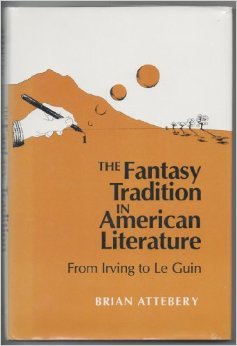 This is a very interesting question. In The Fantasy Tradition in American Literature, Brian Attebery suggests that
This is a very interesting question. In The Fantasy Tradition in American Literature, Brian Attebery suggests that
A fantasy is generally only as good as its materials. Unlike the novelist, whose responsibility is to portray the society he finds around him, the fantasist must create a society, and an entire world, which is unlike his own and yet intimately connected with it, reflecting its beliefs, wishes and fears. Unless he can create from nothing, not only weaving the cloth but also spinning the thread, the fantasist must find elements – magical implements, fabulous beasts, imaginary peoples – in the common imagination; they may then be recognized and responded to within his work. The materials of fantasy, the things that call forth feelings of wonder, the manifest impossibilities that mark a work as fairy tale, are partly individual invention and partly communal property. If the first is not evident, we at least have the skeleton of a traditional tale. If the second is lacking, we have something obscure like someone’s imperfectly translated dream, or a transparent allegory, or, worst of all, an artificial contraption, grotesque or sentimental, or both, since it has neither objective observation nor traditional wisdom to chasten it. Pure invention plays no greater role in fantasy than in any other form of literary art.
And yet, he argues, with only varying degrees of effectiveness
are the writers who think to recreate Tolkien by going to his sources. Without his scholarly understanding of and personal commitment to the English, Celtic, and Scandinavian epics, it is impossible to integrate them into a novelistic fantasy. One ends up simply retelling the exploits of Owain or Odin without adding to them. That is a valid literary activity but one more on the order of Hawthorne’s Tanglewood Tales than of The Lord of the Rings. Sometimes the retelling is tied together with a modern story, especially in children’s books: a group of children wander into the past or come across a relic from it. This kind of story is usually only as satisfying as its modern component. Gods and heroes move woodenly among the present-day characters like early experiments in combining live-action film with animation.
If we may believe Lin Carter in his introduction to Poul Anderson’s “The Merman’s Children” in Flashing Swords! #1 (and I certainly believe him because of the voice of authority in Anderson’s Viking Age novels) that Anderson knew and read in Old Norse, then we may disqualify Anderson from Attebery’s charge above and consider him to have “scholarly understanding” and “personal commitment” enough. But all this only has better framed the real question. Are Anderson’s elves more “Norse” than Tolkien’s? Is his treatment of his “materials” more convincing than Tolkien’s?
In my view, when it comes to the Norse depiction of elves, there is very little “material” with which to treat. The most overt references to the elves come from Snorri Sturluson’s Prose Edda, and he does little more than classify them as “white” and “black.”And now one must wonder why almost every fantasy writer, and Anderson and Tolkien specifically, insists that elves are tall and pointy-eared! Where does that come from?
Indeed, if one is going to invent fantasies out of the “lore” of ancient mythologies, one will despair of ever finding an entirely reliable bestiary or Monster Manual of mythological and faerie entities. (Katharine Briggs’s An Encyclopedia of Fairies might come close.) Mythologies are not written in the same way that our modern fantasies are. The demarcations between elf and dwarf and troll and giant and ogre and goblin become messier and messier the more you read. Wikipedia provides me with a wonderful visual representation of the challenge of creating a detailed taxonomy of Norse supernatural beings. You will see how each demarcation not only lists a number of possible differences within their fields alone, but that these demarcations moreover bleed into nearby ones.
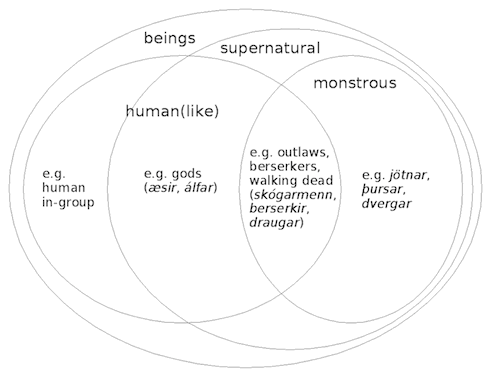
Anderson not only defines a taxonomy out of these signifiers (his Troll, as we already have seen, making it into the Monster Manual) but demonstrates an ingenious way of transforming these materials into modern fantasy. He takes as his stage the Northern European Middle Ages. The story in fact begins with a typical Viking Age narrative and then quickly glides into “Elfland.” Alfheim (and Trollheim, and the Fairy Realms of other countries like the Tir Na Nog in Ireland) literally exist alongside the human realms, but are essentially invisible and unattainable unless one is abducted into them and given “witch sight.” This creates a very curious effect for the reader – the most savage battles can be occurring in the faerie realms while they are noted by the humans only as thunderstorms or as strange, distant sounds in the air.
Moreover, Anderson’s material isn’t specific only to the Norse mythos but to many others’, including the Welsh or Celtic and other cultures from the East and South. The reader gets the sensation that, in this world, all the beliefs are real. This means that the elves are real and that the gods are real (including the “One God”) and that they are all around us constantly going about their business, only that our notice of them is limited. Moreover, the gods and faerie folk of every specific culture are real, as well, making up nations of their own, invisible strongholds that appear in our world as a jutting rock or a dense forest. We have seen this conceit worked every way it can be in the more current subgenre of urban fantasy, but with Anderson’s The Broken Sword, it has a slightly different quality.
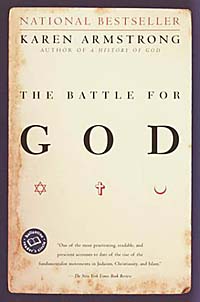 The first difference, of course, is that Anderson’s action does not take place in the modern world but in the Middle Ages. This might seem like an arbitrary and even inconsequential observation until we pick at it a little. One of the major differences arising from the placement of time is that the human characters of Anderson’s novel well and truly believe in the gods and in the faerie folk. For these people (and or most of our own ancestors, presumably) the faeries are real. I often think that this is a difficult concept to get our heads around, even when we think that we may well and truly understand it. While trying to explain the concept of paradigms to others, I often bring up the medieval worldview. In the Middle Ages, I explain, everybody knew that heaven was up, past the sky, wherein resided God and the angels and the saints, and underground, deep underneath your feet, was Hell, where Satan and his devils and the sinners were. No, I say, we are not allowed to nod and then privately smirk because we know better. We knew this. This was true. Add to this the idea that faeries lived in that hill and that it was well known that sometimes people were captured by the same, and it’s not just a quaint story, something to entertain children or adults with at night around the fire (though it certainly must have been that too) but real.
The first difference, of course, is that Anderson’s action does not take place in the modern world but in the Middle Ages. This might seem like an arbitrary and even inconsequential observation until we pick at it a little. One of the major differences arising from the placement of time is that the human characters of Anderson’s novel well and truly believe in the gods and in the faerie folk. For these people (and or most of our own ancestors, presumably) the faeries are real. I often think that this is a difficult concept to get our heads around, even when we think that we may well and truly understand it. While trying to explain the concept of paradigms to others, I often bring up the medieval worldview. In the Middle Ages, I explain, everybody knew that heaven was up, past the sky, wherein resided God and the angels and the saints, and underground, deep underneath your feet, was Hell, where Satan and his devils and the sinners were. No, I say, we are not allowed to nod and then privately smirk because we know better. We knew this. This was true. Add to this the idea that faeries lived in that hill and that it was well known that sometimes people were captured by the same, and it’s not just a quaint story, something to entertain children or adults with at night around the fire (though it certainly must have been that too) but real.
Of course, many people still believe in fairies and spirits and angels and what have you, some more than others. Many people believe them for the very reason that they so earnestly wish they did. I think this is particularly true for those who live in the so-called “developed” nations, and something like this is what I studied in literature when I wrote my thesis on O.E. Rolvaag. In my introduction to this series, I mentioned the psychological trauma some cultures underwent when they had to give up their folk beliefs and legends by assimilating into a highly secular American identity committed to scientific empiricism. This sort of thing is still going on, and many people don’t recognize it because a lot of this psychological trauma seems to be occurring in cultures that don’t recognize that their monotheisms have a lot in common with “superstitious” folk belief. In The Battle for God: A History of Fundamentalism, Karen Armstrong defines fundamentalism as the response of deeply religious communities to what they perceive to be aggressive secular humanism. She argues that traditional religious belief is dying. That violent fundamentalism is the death spasms of theistic and animistic perspectives as Enlightenment principles have their totalizing way.
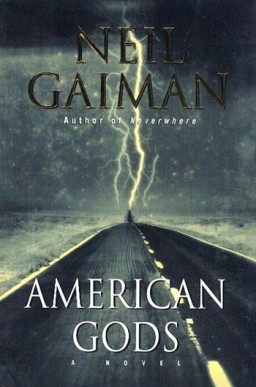 Whether you agree with this or not, it is interesting to consider urban fantasy (and all fantasies) in this framework. A quality of urban fantasy is that the paranormal irruption is not true – perhaps even in a greater extent than that the presence of the paranormal in pre-modern settings is not true. For the pre-modern, the reader’s tendency should be, “Well, they didn’t know better.” The medieval thinkers thought that heaven was in the sky because they didn’t have the understanding of astrophysics that we have now. Our perception of the universe was always true (or so we think!). It just had to be found out then. For the urban fantasy, the reader’s response is, “We know better.”
Whether you agree with this or not, it is interesting to consider urban fantasy (and all fantasies) in this framework. A quality of urban fantasy is that the paranormal irruption is not true – perhaps even in a greater extent than that the presence of the paranormal in pre-modern settings is not true. For the pre-modern, the reader’s tendency should be, “Well, they didn’t know better.” The medieval thinkers thought that heaven was in the sky because they didn’t have the understanding of astrophysics that we have now. Our perception of the universe was always true (or so we think!). It just had to be found out then. For the urban fantasy, the reader’s response is, “We know better.”
What Anderson says in The Broken Sword is: “It is/was true.”
In relation to this consideration, what most prominently pops into my mind is a line – remembered rightly or not – from Neil Gaiman’s American Gods. In that work, someone tells Shadow, the protagonist, to “believe everything.” But this imperative also isn’t quite what Anderson is getting at, because Gaiman’s American Gods depicts a common conceit in which the gods all exist but only insofar as humans believe in them. This concept relegates gods in the Jungian sense to the landscape of the human collective unconsciousness and, in the worst reading, nullifies their agency by suggesting that the gods really are but mere fragments of an anthropoid dream. This moreover insidiously suggests that the human reality is the only real reality or perspective. Again, not so in Anderson. In The Broken Sword, the gods don’t care if humans believe in them or not. In fact, they hardly care about humans at all, unless the humans can be manipulated into the gods’ own highly vaunted concerns. Likewise with the elves. Well, with elves it’s a little different. Because in Anderson’s world (as in Three Hearts and Three Lions) elves can’t bear the touch of iron, and elves and gods both can’t abide prayers and relics in connection with the White Christ.
That’s right. Unlike American Gods, wherein the Christian faith barely gets a mention, it’s very much in operation here. In Anderson’s world, the Christian faith is very real and very powerful. Specifically, the power dynamic of all Anderson’s relevant forces may be considered in this way:
- The White Christ: Humans may call on him or Mary or their saints at will to expel any god or elf. Baptized Christians enjoy many favors, including exemption from the elven ability to kidnap them and replace them with changelings. Perhaps also included in this group is Satan, or the Evil One. He makes one appearance in this book, and he is truly an ominous and enigmatic figure. A witch believes that she has made a deal with the Evil One, but it turns out to have been Odin instead, and Odin has manipulated her for his own ends.
- The Elves (and other Faerie Folk): Like the gods, they are immortal (unless slain) and highly skilled in magic. They live in realms alongside the humans (and maybe the gods?) and possibly can slay unshriven humans at will, as the trolls do in one scene. Their main weakness, besides their helplessness in the face of religion, is that they cannot handle iron, though the dwarves can.
- Humans: They can handle iron and call on the highest authority, the White Christ, to stand for them against all the powers of Faerie and darkness.
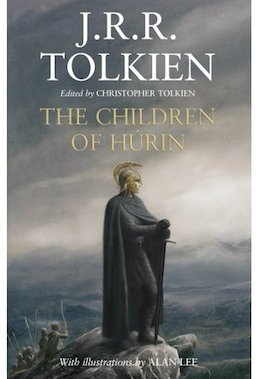 These power dynamics, in a world wherein these powers are real and not just superstitions, inevitably cries the question: what happens in the modern era, wherein for many the “White Christ” no longer is real. This is certainly a question I will keep in mind as I read on, particularly as I examine Anderson’s science fiction works that presents an Enlightenment paradigm whose chief ends appear to be progress, commerce, and discovery. What power, in Anderson’s grand narrative, may ultimately trump the “White Christ”? The question is all the more compelling as I notice that, in what I’ve read so far, Anderson always appears to treat the Christian religion with respect, perhaps even reverence, claiming at one point in The Broken Sword that the message of peace – even a peace that might mean a willing sacrifice of one’s life without a fight – was a demonstration of a greater strength than the Norse concept of how the stronger has a right to destroy and exploit the weaker.
These power dynamics, in a world wherein these powers are real and not just superstitions, inevitably cries the question: what happens in the modern era, wherein for many the “White Christ” no longer is real. This is certainly a question I will keep in mind as I read on, particularly as I examine Anderson’s science fiction works that presents an Enlightenment paradigm whose chief ends appear to be progress, commerce, and discovery. What power, in Anderson’s grand narrative, may ultimately trump the “White Christ”? The question is all the more compelling as I notice that, in what I’ve read so far, Anderson always appears to treat the Christian religion with respect, perhaps even reverence, claiming at one point in The Broken Sword that the message of peace – even a peace that might mean a willing sacrifice of one’s life without a fight – was a demonstration of a greater strength than the Norse concept of how the stronger has a right to destroy and exploit the weaker.
This seems to be a fitting bridge back to Tolkien, who obviously was a committed Christian. A last observation I would make is the surprising motif of incest both in this work and – not in The Lord of the Rings – but in Tolkien’s Children of Hurin, which appears most prominently in a recent single volume arranged and edited by Christopher Tolkien and in a much more compressed version in The Silmarillion. Both Anderson’s The Broken Sword and that work by Tolkien feature heroes who mistakenly fall in love and “wed” their own sisters. And in both works this is the very thing that catalyzes the heroic tragedy. There are instances of incest in Northern mythology and sagas, but I don’t think that this accounts for the dual interest. Again, this is merely an observation. Finally, they both clearly take inspiration from the many cursed swords in Northern mythology – Anderson most obviously with Tyrfing, which is the broken sword of his title, and Tolkien with Turin’s sword Gurthang. I suppose that we would begin a tedious path if I continued and pointed out that Aragorn had a broken sword.
Postscript: While searching for a book cover for this post, I discovered this amazing textual comparison, on this very site, by Ryan Harvey. Who knows what other treasures are buried in the Black Gate archives!
Middle-Earth distinct from ‘The Broken Sword’? I haven’t read ‘The Broken Sword’ (although, funnily enough, I bought a copy for my brother, who really enjoyed it). That said – and on the basis of your article – I think there are crucial differences and that Tolkien was careful to establish those differences, primarily by using a wholly imaginary creation as his MC (I’m talking specifically about ‘The Hobbit’ here). Bilbo is a useful conceit because his mindset resembles our own, and thus he becomes our eyes and ears as he travels through Middle-Earth, but I’d attach as much importance to what he is – ie, a hobbit, a creature not drawn from any recognisable mythology. Thus the reader knows from the start that although this book will draw on various traditional mythologies for inspiration, it will not be dictated by them.
You suggest that Anderson might be insinuating his depiction of the elves is more accurate and (quite correctly, I think) point out that actual information about elves in traditional lore is pretty sparse, so what constitutes ‘accuracy’ is a moveable feast. Crucially, Tolkien wasn’t striving for accuracy, but to do what most writers of fantasy try to do – ie, deploy recognisable archetypes etc in an unfamiliar way but which still has a resonance for the reader – Attebery’s criteria.
Just my two cents’ worth!
* in this context, I personally don’t see a contradiction re incorporating Christian mythologies into a story dealing with other mythologies, because any author is asking his reader to buy into his story’s reality and its rules, *what* that reality is being largely academic – whether a hybrid of the real and the imaginary, fundamentally accurate or complete fiction.
Sorry, first sentence should read ‘What makes Middle-Earth distinct from ‘The Broken Sword’?
Hmm. In the original, the witch made the deal with Satan. Anderson revised it to be more Norse.
Thanks, Mary.
When I read Ryan Harvey’s textual comparison between the two editions, I also learned that, for his 1971 rewrite, Anderson chose to name his sword and make it an actual cursed weapon that is famous, particularly in Hervor’s Saga. As I learn stuff like this, I wonder if Anderson started working, at least with his revisions of The Broken Sword, in decided reaction to Tolkien’s achievements.
[…] came up after my last post, in which I wondered why Anderson and Tolkien (and many other fantasy writers) agree that elves are […]
Came across this post searching for The Broken Sword book and thought I’d weigh in. The pointy ears thing might have been taken from irish mythology. We have a Cinn-cat and a Labraid Loingsech, both of whom are descended from the mythological Fir Bolg and are said to have cat and horse ears respectively. Tolkien was familiar with the irish manuscripts, though he referred to them as “mad”.